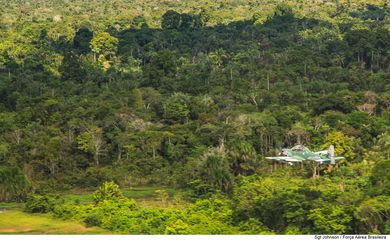Indigenous practices allowed during treatment in Roraima hospital

The treatment of indigenous patients at the Hospital da Criança Santo Antônio (HCSA), in Boa Vista, capital of the northern state of Roraima, has incorporated indigenous people’s cultural traditions, ranging from healing rituals to typical foods, said Yanomami language interpreter Richard Duque, who works at the hospital.

“We here at the hospital fully subscribe to this approach. We prepare the environment so care providers can follow it, as much as our conditions allow,” Duque explained.
Among the practices incorporated to conventional medical treatment is spiritual support. “We bring over their preferred healer—or xapiri in the Yanomami language, the one they trust—and we schedule in their traditional healing practice.”
Also in respect to the indigenous culture, the menu is specially adapted to the preferences of each ethnic group. Nutritional workers add foods such as cassava, fish with flour, and regional fruits.
The facilities also include a ward for Yanomamis and other ethnic groups, including net-beds for children and their guardians.
Administered by the Boa Vista city, the HCSA is the only health station that cares for children from 29 days to 12 years old. The center sees patients from all over the state and also from Guyana and Venezuela.
In 2022, 703 Yanomami people were admitted to the hospital. Right now, 59 indigenous are hospitalized; of these, 49 are Yanomami children and seven are in the intensive care unit. The main causes of hospitalization are acute diarrhea, acute gastroenterocolitis, severe malnutrition, pneumonia, ophidian accident, and malaria.
“Most of these kids come in malnourished, but what lies behind it is something else—an infection, pneumonia, diarrhea, worms, some trauma,” says Dr. Eugênio Patrício, head of the HCSA’s extended care unit.






